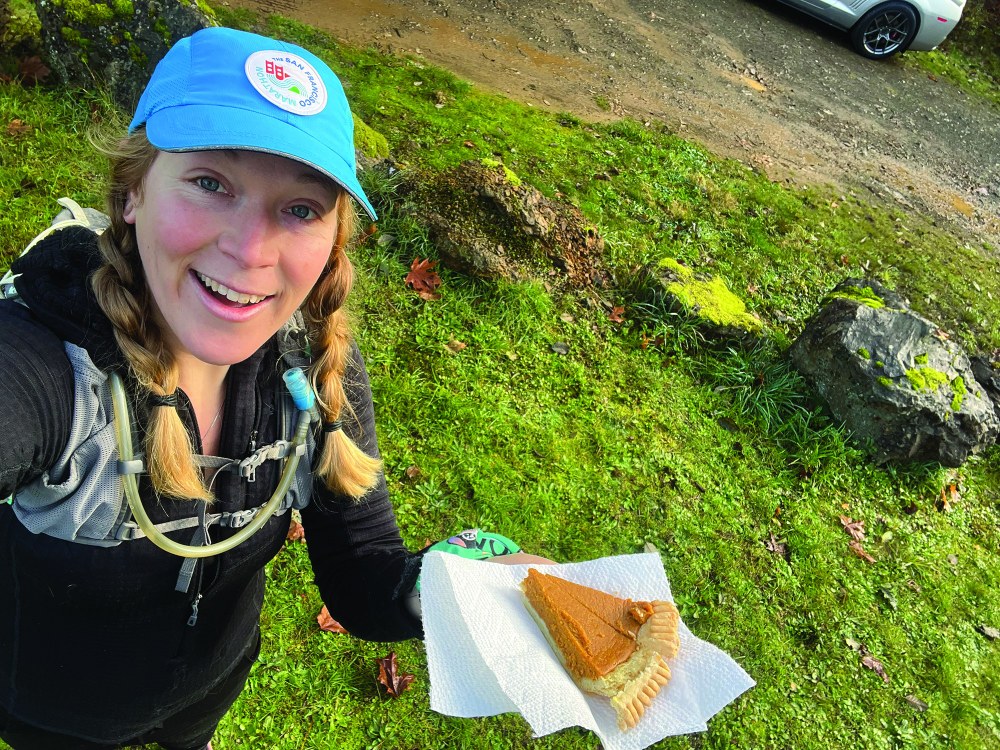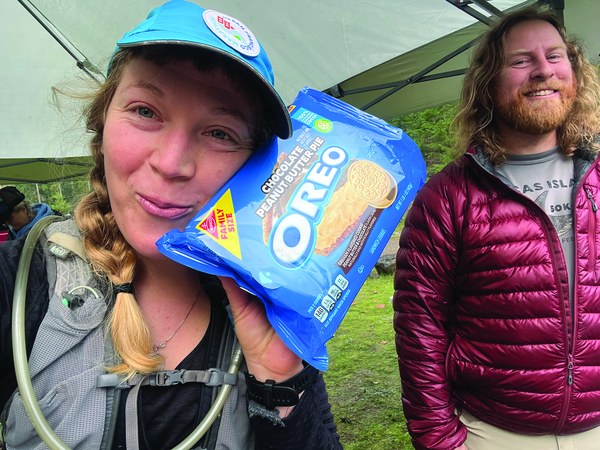
But what do you eat? This is my students’ favorite question when I tell them I’m running a 100-mile race. More than anything, they want to know what’s in store for my stomach (they care deeply about my stomach when I talk about mountaineering, too). If you’re also curious, here are my insights from years of running and mountaineering.
Carbo load
Runners are known to embrace pasta dinners the night before a big race. This strategy works for any lengthy outdoor endeavor. If you’ve got a long day ahead, treat yourself to a carb-heavy breakfast or lunch the day before. Pasta is a breakfast food, right?
Keep it simple
Plain tortillas. They might sound boring, but for long trail races, backpacking, and high-altitude mountaineering, I swear by them. Tortillas fold into your pocket and running bag, stuff into a bear can, and last for days without refrigeration. For nutrition, they’re simple carbohydrates. Add peanut butter and they can be a complete meal. While not the most appetizing, they won't make you sick.
Wise food choices
Bring what you love to eat! If you’re nauseous from high altitude or a strenuous run, what food can you handle? Forewarning: you might not like your chosen food after surviving on it for30 hours, so “choose a food you can lose.” For example, I love my boyfriend’s chocolate chip cookies, but I choose to bring Metropolitan Market’s “The Cookie” because after consuming three-and-a-half of them while jogging in the heat, I can’t stand the idea of eating another (at least not until next year).
 Kelsey enjoying her favorite Oreo flavor: Chocolate Peanut Butter pie.
Kelsey enjoying her favorite Oreo flavor: Chocolate Peanut Butter pie.
Weird food choices
Trail pizza: an unusual food choice I learned from The Mountaineers. People love it, but it doesn’t float my boat. I would rather have the “Dirty Turtle” special: a shot of maple syrup followed by a shot of pickle juice. The pickle juice provid esessential electrolytes and salt; the maple syrup provides sugar for sustained energy. Other fun options include: hot pancakes (for overnight races), ramen noodles with veggie broth, salted mashed potatoes, grilled cheeses, and quesadillas with guacamole. Some races serve endless piles of Peanut M&Ms, Girl Scout Cookies, and homemade muffins. I’ve seen mountaineers eat some strange things (cold Chipotle burritos, Swedish Fish by the handful, a spoonful of coconut oil), but nothing like the hot food bar offered for ultra-runners at most 2am aid stations.
Vegan or not vegan? That is the question
If you live a plant-based life, the middle of your race might not be the right time to dive headfirst into a gooey grilled cheese sandwich. Check out vegan snack options before your run. Some include: Oreos (packed with sugar and an easily digestible carb), flour tortillas (check that they’re made without lard), baked potatoes, and watermelon. As a seasoned athlete, I eat mostly vegan. When racing, I try to listen to my body. If that grilled cheese speaks to me at 2am, maybe that’s what I need, but my drop bags are always stocked with my favorite vegan treats.
Test your palate
Mountaineers love a good campfire recipe exchange and can wax poetic about their exact breakfast recipes (mine is 1 cup of instant oats, 2 tablespoons of peanut butter, 1 teaspoon of chia seeds, and 1 mashed banana). Every post-trip gathering eventually involves a conversation about food: what you ate, what made you feel sick, what you couldn’t choke down no matter how hungry you were. Listen to others’ choices and try incorporating them into your own meal planning at home or on a conditioning hike. But whatever you do, don’t try a new food on race or summit day, or your next meal will be a generous serving of humble pie.
This article originally appeared in our spring 2024 issue of Mountaineer magazine. To view the original article in magazine form and read more stories from our publication, visit our magazine archive.
 Kelsey Hoffman
Kelsey Hoffman